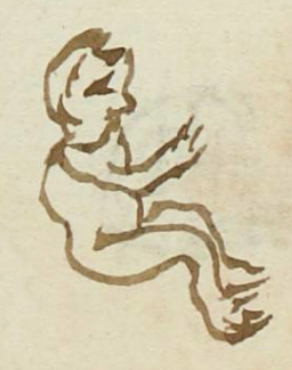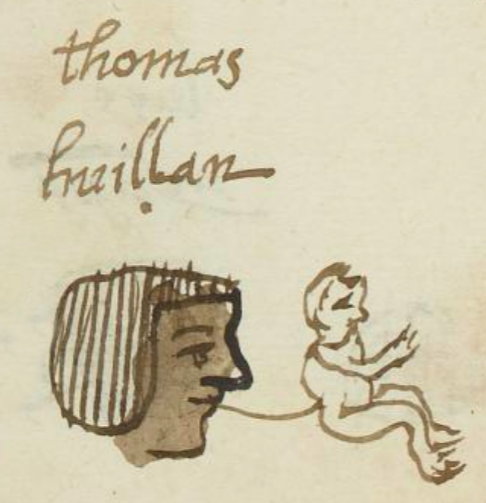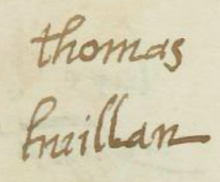Huilan (MH509r)
This black-line drawing of the simplex glyph for the personal name Huilan (here, attested as a man's name) shows a seated, naked man or youth in profile facing toward the viewer's right. His knees are bent, but not as tightly as the usual male pose for seated lords. His arms are raised in front of his body. His posture is one where he is leaning back somewhat.
Stephanie Wood
The gloss suggests a verb, huilana, to drag something or crawl on all fours. Perhaps this naked individual is a baby that has not yet learned to walk, and therefore it is sitting. It could be dragging its bottom along the floor or ground (not pictured here). If the individual is being dragged, this is not obvious for lack of another person or animal that would be dragging this one. The glyph for the name Tlahuilan, referencing the verb tlahuilana, to drag something, provides a different example, that of a wooden beam that would be dragged by a rope. See below.
Stephanie Wood
thomas
huillan
Tomás Huilan
Stephanie Wood
1560
Jeff Haskett-Wood
dragging, arrastrando, gateando, crawling, bebés, nombres de hombres

huilana, to drag, https://nahuatl.wired-humanities.org/content/huilana
posiblemente, Arrastró
Matrícula de Huexotzinco, folio 509r, World Digital Library, https://www.loc.gov/resource/gdcwdl.wdl_15282/?sp=97&st=image
This manuscript is hosted by the Library of Congress and the World Digital Library; used here with the Creative Commons, “Attribution-NonCommercial-ShareAlike 3.0 License” (CC-BY-NC-SAq 3.0).




